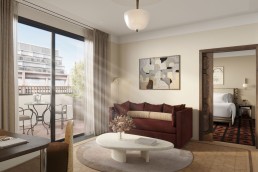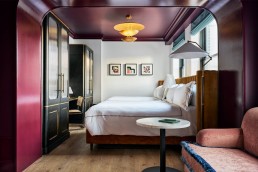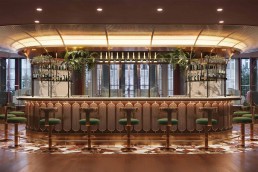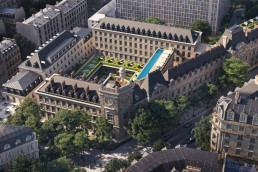Lind + Almond offers first look inside design of The Newman
Lind + Almond has offered a first look at design details inside The Newman, a new opening from Kinsfolk & Co.
Slated for Summer 2025, the 81-key opening – whose architecture is courtesy of ReardonSmith Architects – sees the studio seeking inspiration from Fitzrovia, influenced by Victorian nuances and Art Deco touches, as well as the characters who called it home during its golden years between the 20s and 50s.
Among them was Nancy Cunard, whose bangles and polka dots subtly weave their way into the hotel’s design narrative. Prints and sketches of her adorn the walls, alongside photography of other characters of note from the local community.
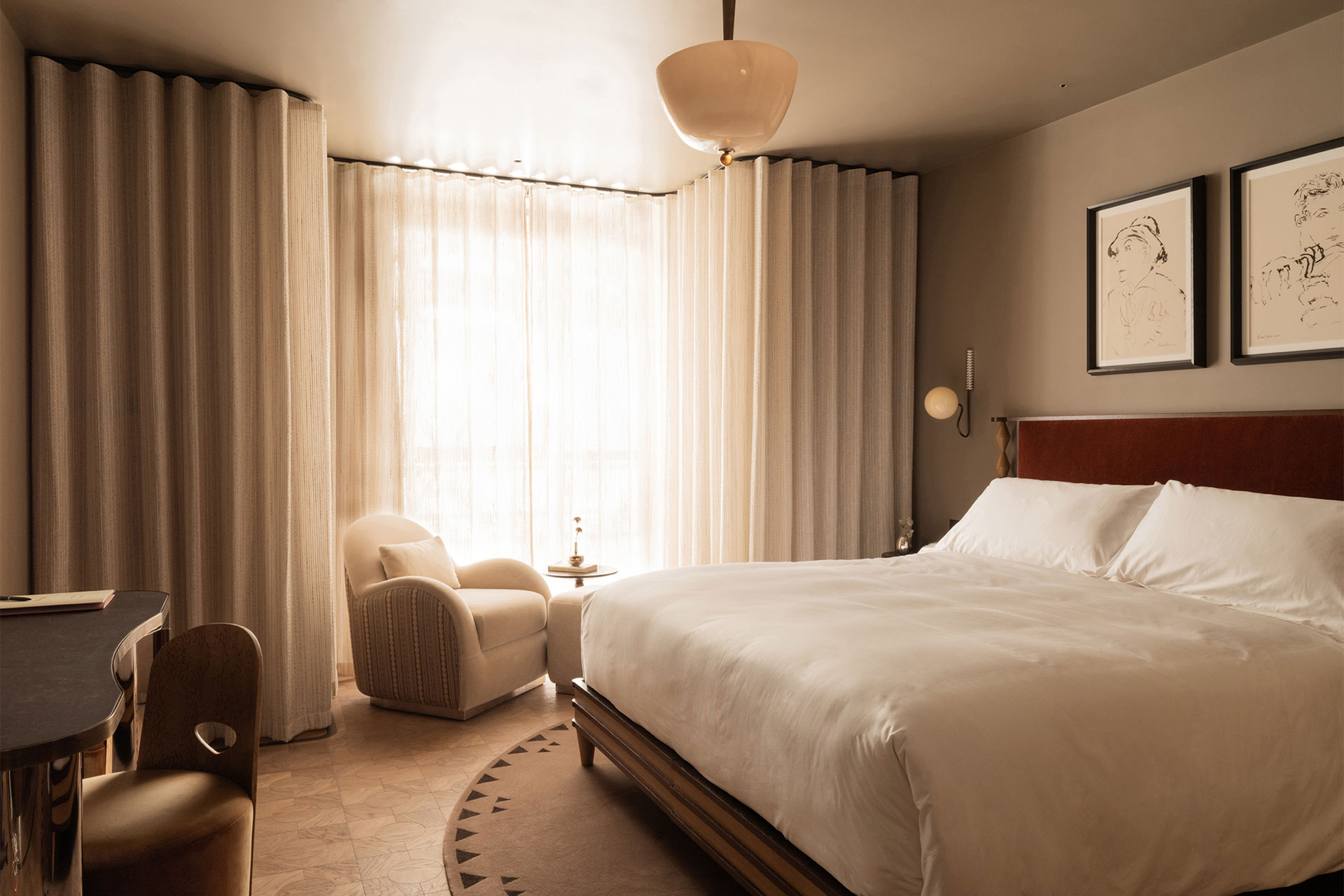
“We chose to partner with Lind + Almond because they truly understood our values and design vision for The Newman,” says Paul Brackley, founder and CEO of Kinsfolk & Co. “Fitzrovia, often overlooked in London, is a unique blend of residential and commercial spaces, with many hidden stories and ultimately, an area holding eccentricity behind its more discreet façade. From our very first meeting, we were impressed by the way Pernille and Richy delved into the area’s history, unearthing gems that have since become integral to The Newman’s design narrative.”
Guestrooms and suites are calm and curated, with deep hues of burnt red and green featuring alongside timber and rich wood tones, freshened with polishes of stainless steel to give a contemporary Art Deco feel.
“The signature, entry-level room has turned out beautifully,” says Richy Almond. “Here, sweeping curves represent the pen strokes of the illustrators who have frequented the district’s drinking holes over the decades.”
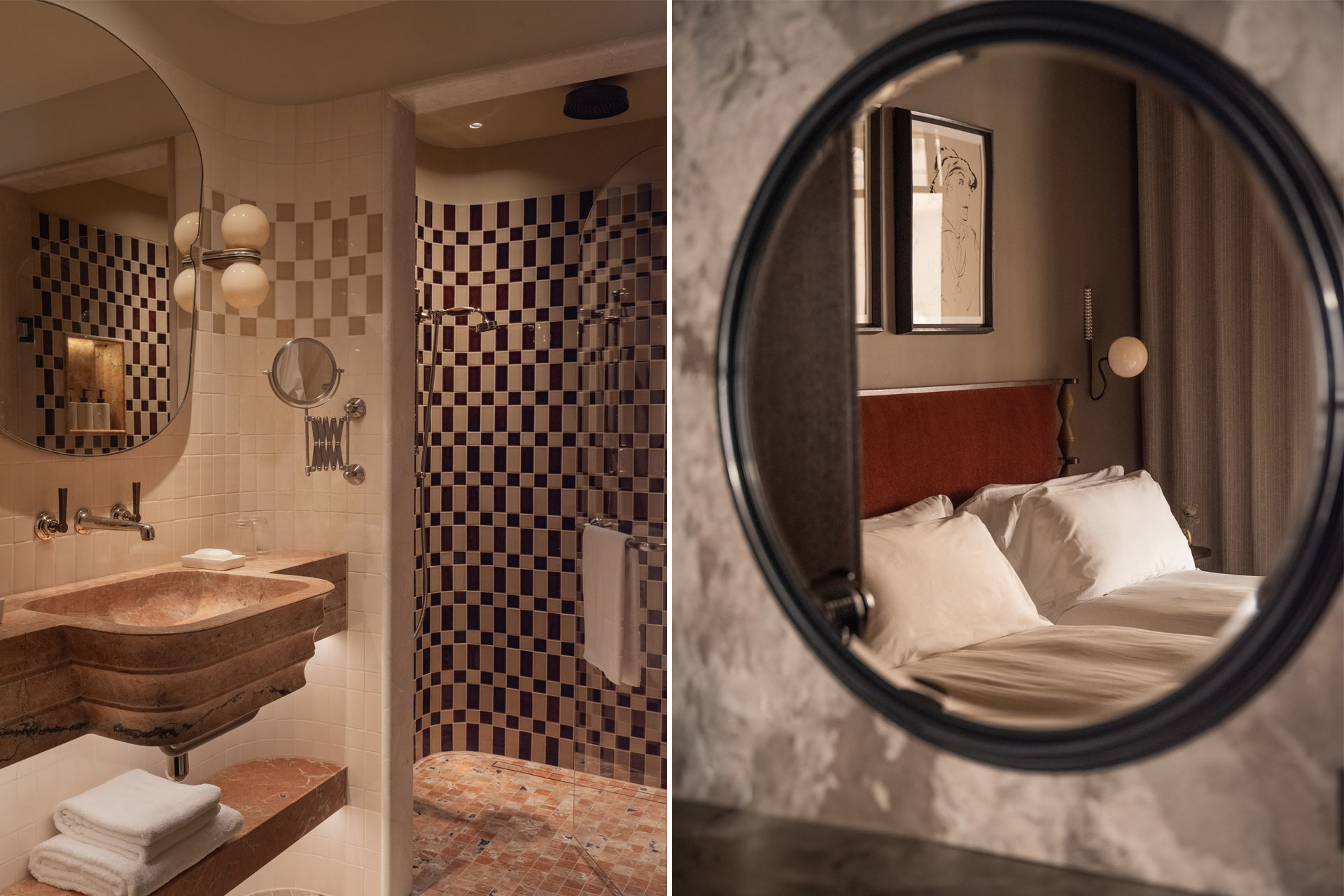
Influences are diverse, and also include the glazed façades and bubble balconies found just a few streets away from The Newman, uncovered through a photographic study. The distinctive architecture inspired the design of the bathrooms, which feature custom-made tiles and stone-carved vanities that echo the elegance of the Victorian era – a time when Fitzrovia thrived – while also nodding to the area’s later Art Deco influences.
“The Newman must have heart and soul, seamlessly blending into London as if it’s always been there,” says Pernille Lind. “The art will play a crucial role in telling this story, avoiding the blandness often seen in hotel decor. Fitzrovia and London’s artists will continue to provide inspiration and decorate the walls through their artwork. We’re collaborating with a curator renowned for selecting art that truly reflects the hotel’s concept.”
On the ground floor is an open-plan, multi-functional space consisting of a reception, lounge, brasserie and bar. The design of Brasserie Adeline pays homage to Fitzrovia’s rich cultural history, drawing inspiration from iconic figures such as writer and activist Nancy Cunard, whose influence is reflected in the brasserie’s monochrome palette and stripped-back, graphic aesthetic.
Interiors also nod to furniture designer Gerald Summers, whose craftsmanship shaped the neighbourhood’s design legacy. Traditional Victorian influences are evident in the joinery and glass screens, grounding the space in the local context while offering a fresh, modern dining experience.
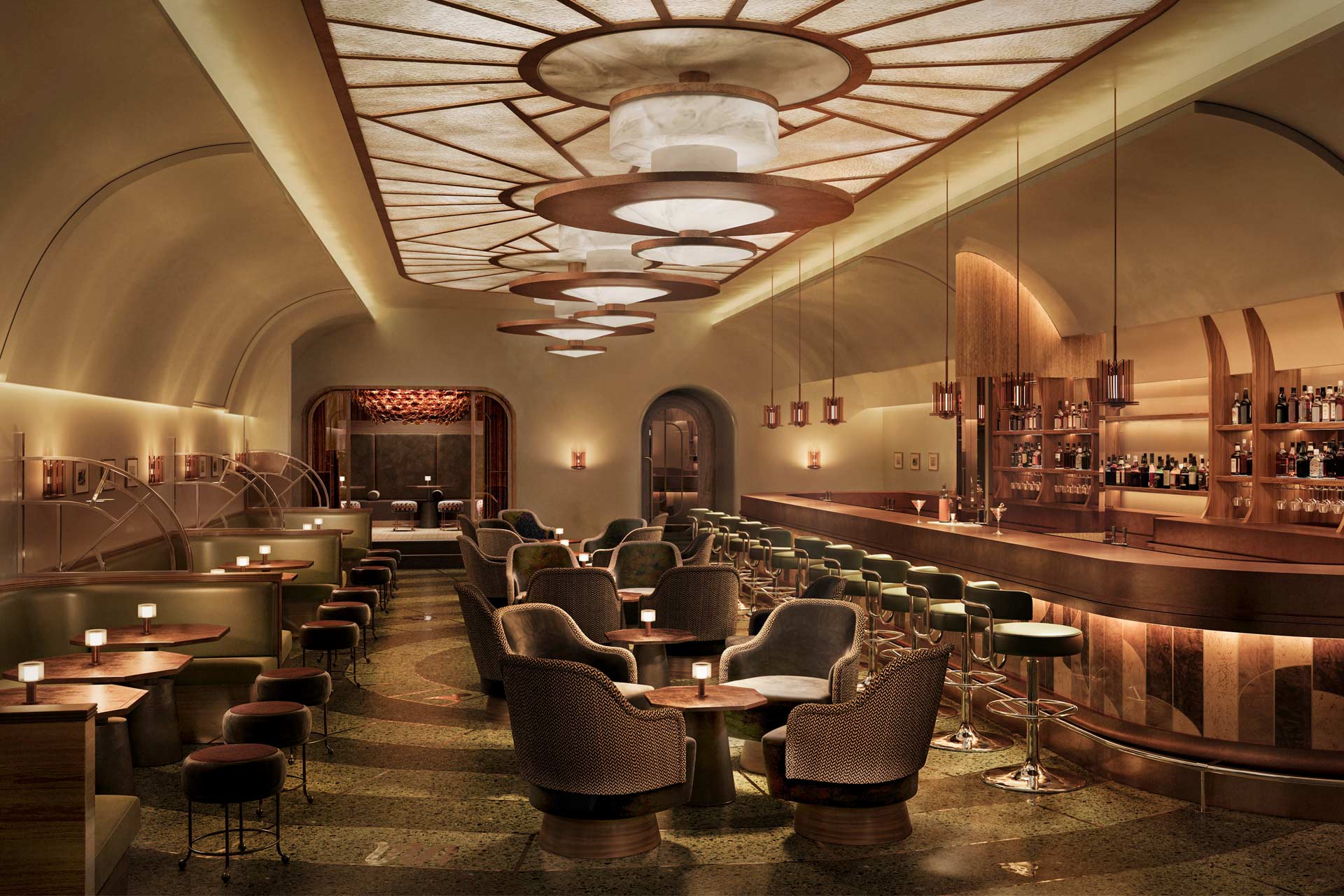
Gambit Bar draws on the duality of Fitzrovia – a neighbourhood that, while outwardly refined, has long held a creative spirit. Inspired by figures like Percy Wyndham Lewis, founder of the Vorticist art movement, the bar’s design reflects the sharp edges and fractured forms that emerged in response to post-WWI unrest, seen in details such as the coffered ceiling. The bar’s allure is further enhanced by references to occultist Aleister Crowley, who claimed to have been visited by angels and demons. Characters such as the flamboyant Quentin Crisp and Julian MacLaren-Ross, whose writings captured the essence of 1940s culture in Fitzrovia, are also embodied.
Elsewhere, the wellness floor is inspired by the Swedish Grace movement, drawing on the textures, tones and patterns of the tradition through natural materials such as warm oak, bronze, leather, textured coloured glass, antique brass and walnut.
Almond adds: “The hotel needed to feel deeply grounded in its Fitzrovian surroundings while still offering a fresh, contemporary experience. We couldn’t simply place a flashy hotel in the heart of this cherished part of London which doesn’t have the glitz of Mayfair or the bright lights of Soho. When you do walk around Fitzrovia it’s neither of those things – it’s eccentric but hidden behind a façade somehow.”
Related Posts
10 February 2025
